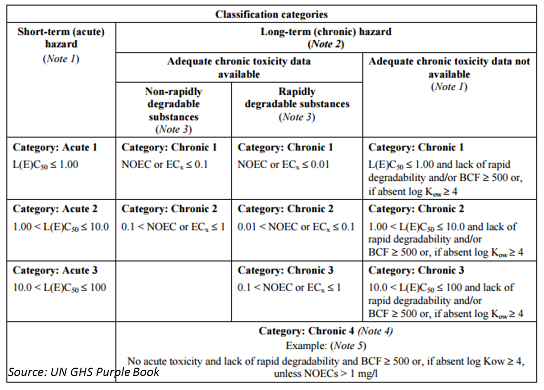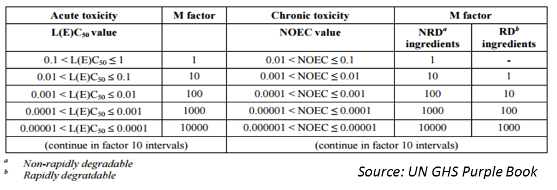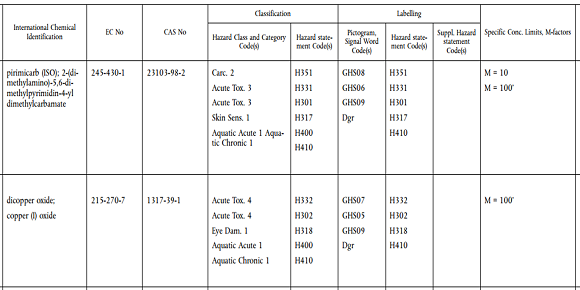What Is M-factor and How It Is Used for GHS Classification
Little Pro on 2017-02-02
M-factor stands for multiplying factor for substances that are highly toxic to aquatic environment (i.e, LC50 or EC50<1mg/L). When classifying a substance as acute aquatic toxicity category 1 or chronic aquatic toxicity category 1 under GHS, it is usually necessary to indicate an appropriate M-factor (Note: This is mandatory under EU CLP regulation) . The purpose of applying M-factor is to give an increased weight to highly toxic components when classifying a mixture. In this article, we will show you how to use M-factor for mixture environmental hazard classification and how to assign M-factor.
GHS Classification Criteria for Aquatic Environment
The picture below shows you the aquatic environmental hazard classification criteria for a substance. Lower LC50/EC50/NOEC indicates higher toxicity. Please note that degradation and bio-concentration shall also be taken into account.

When classifying a mixture containing multiple components, we will need to start using M-factor. M-factor is also important for determining whether a mixture belongs to marine pollutant or not.
How to Use M-factor for Environmental Hazard Classification
The picture below shows you how to classify a mixture for its environmental hazard by using M-factor. For any component classified as ‘Acute Category 1’ or ‘Chronic Category 1’, its presence has to be taken into account if its concentration >= (0.1/M-factor) %.

How to Assign M-factor
The value of multiplying factor (M-factor) for a substance can be assigned according to the table below:

2 M-factors for 1 Substance?
In the annex VI to CLP regulation (EU's harmonised substance classification list), you may find 1 or 2 M-factors for some substances (see example below). This is because M-factors can be assigned to Aquatic Acute 1 or Aquatic Chronic 1 or both. The M-factors for Aquatic Acute 1 and Aquatic Chronic 1 do not have to be the same.

Where no M-factor is listed in the Annex VI to CLP regulation, M-factor(s) based on available data for the substance shall be set by the manufacturer, importer or downstream user.
Reference and More Reading
- UN GHS Purple Book: Classification criteria for environmental hazards [PDF];
- EU CLP Classification and Labelling of Substances - Environmental Hazards [PDF];
- GHS classification criteria in a single page;
- Comparison of GHS building blocks in EU, USA, China and Japan
- Comparison of GHS Classification Concentration Limits for Reproductive Toxicity
- https://schc.memberclicks.net/assets/meetings/fall2013/brigandi.ppt.pdf
Having Questions?
We do not provide consultancy services. If you have questions or need any help, please contact our sponsor. You may also find an expert in CSP business directory below. If you are a consultant, you may get yourself listed in CSP business directory (free) or sponsor this page to leave your contact info on this page..

Tags: Topics - GHS, GHS Classification